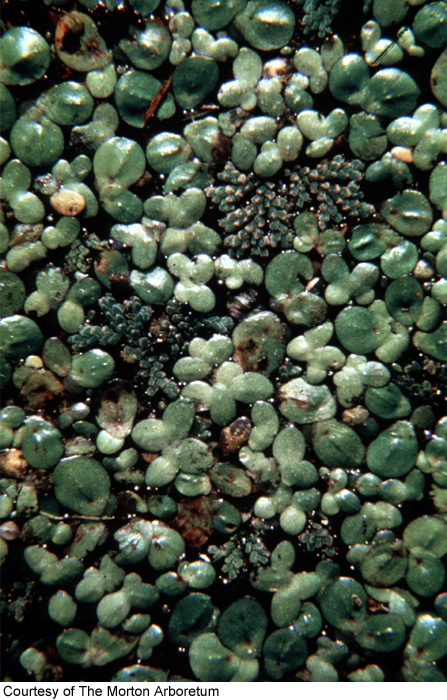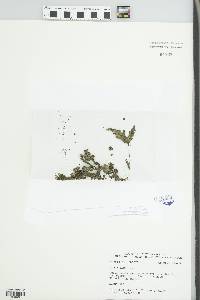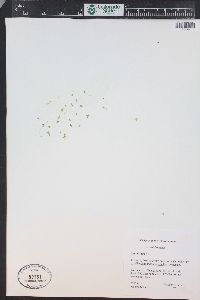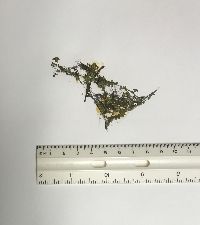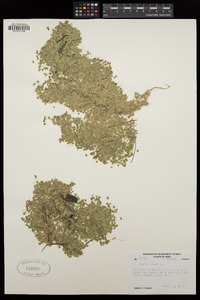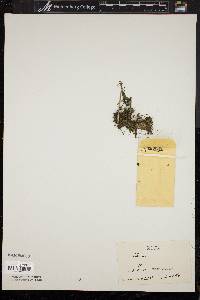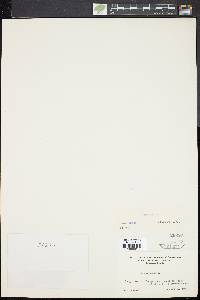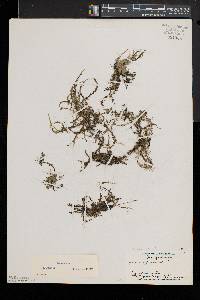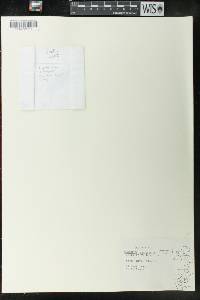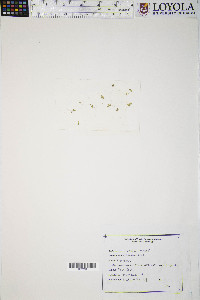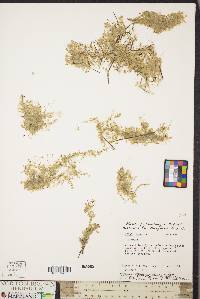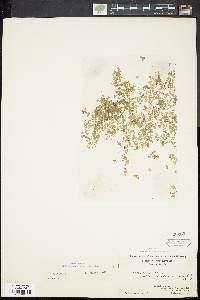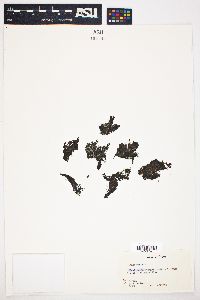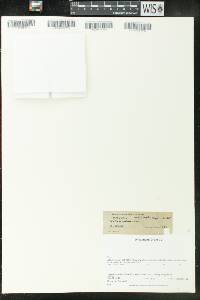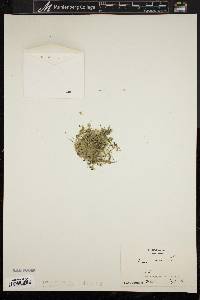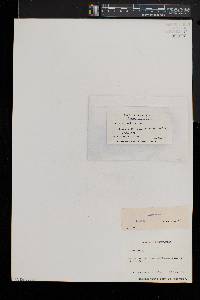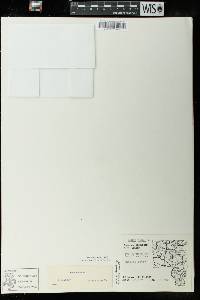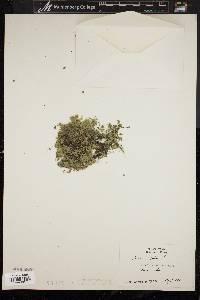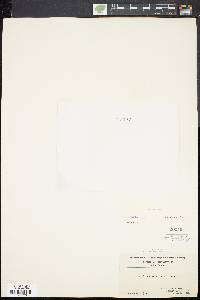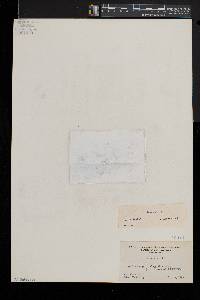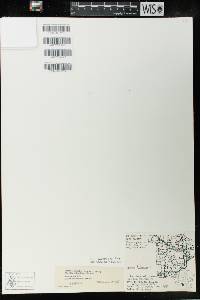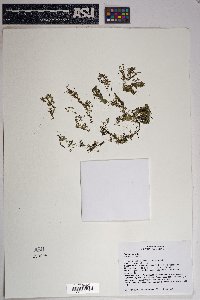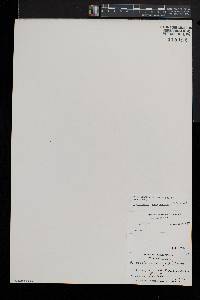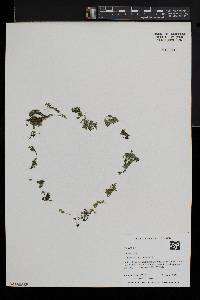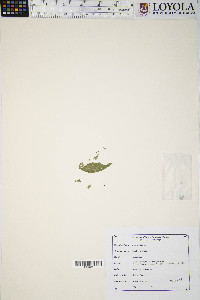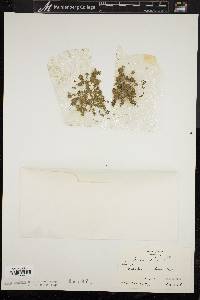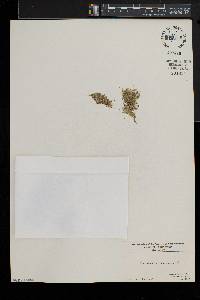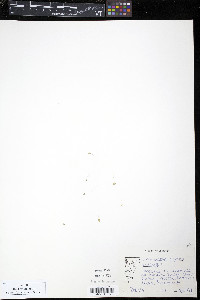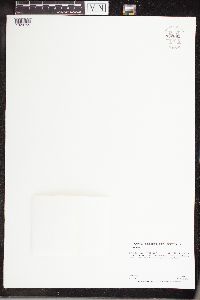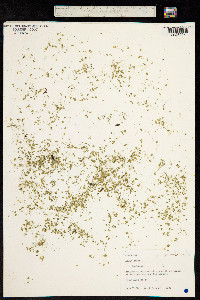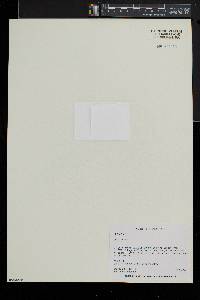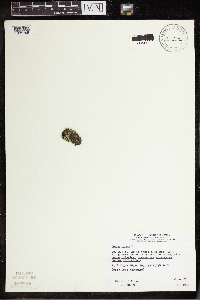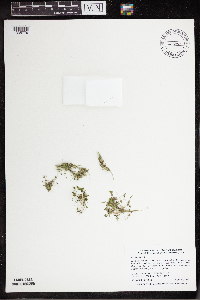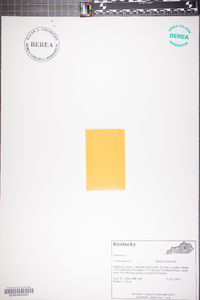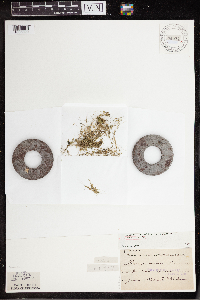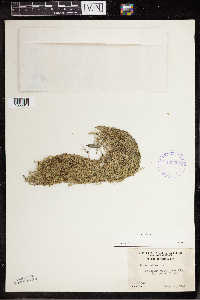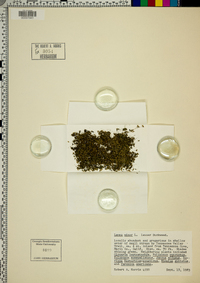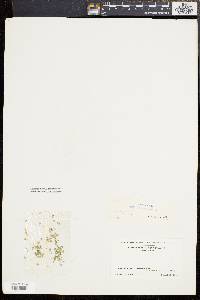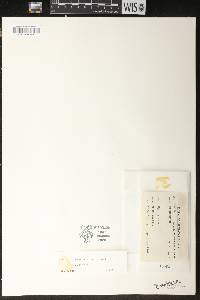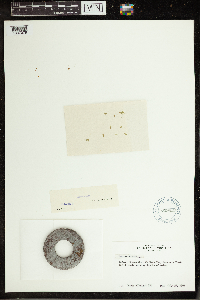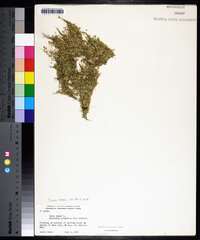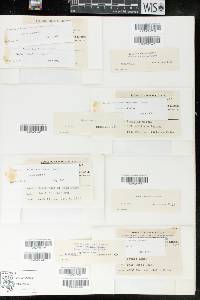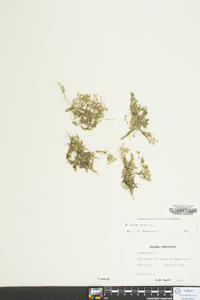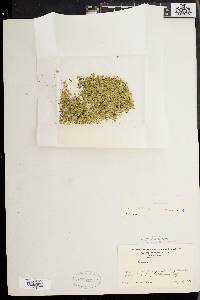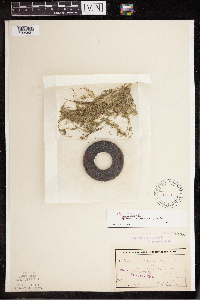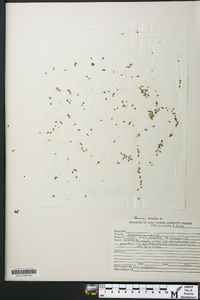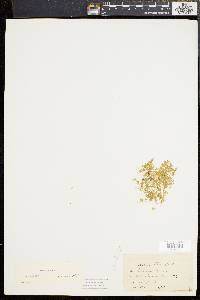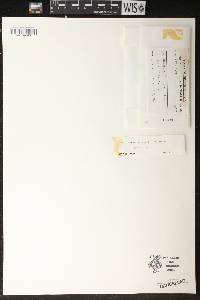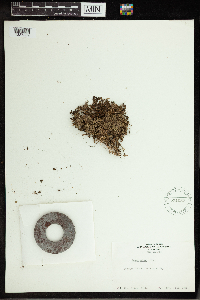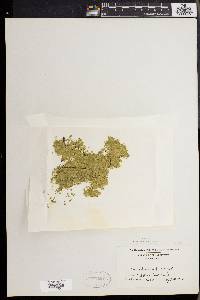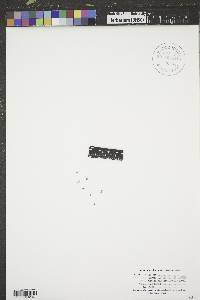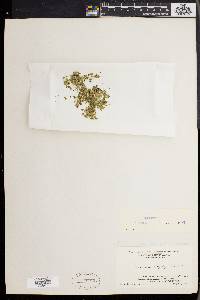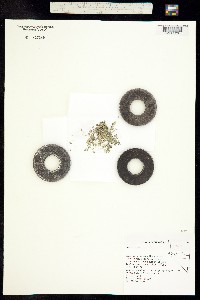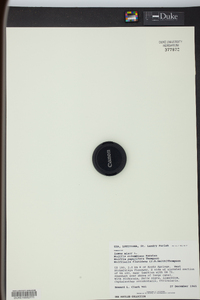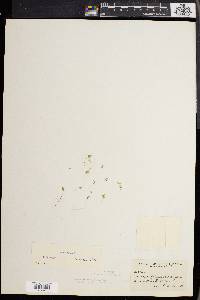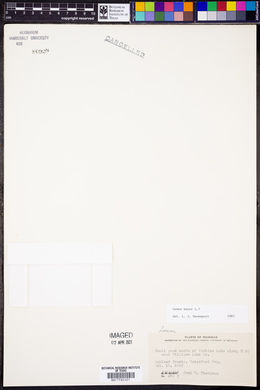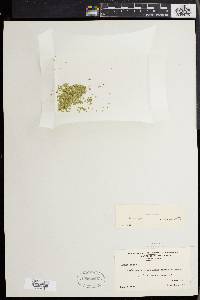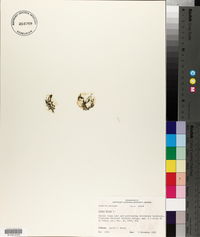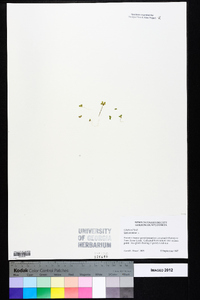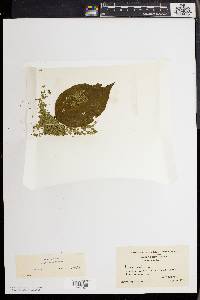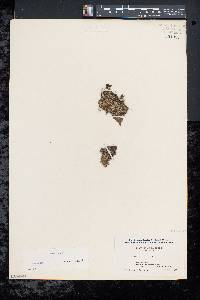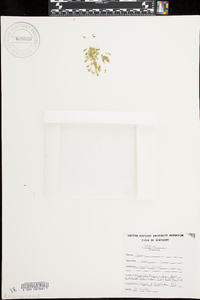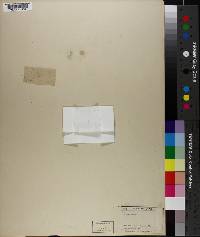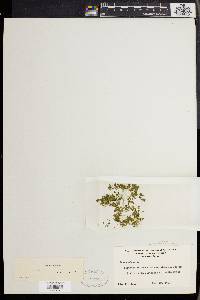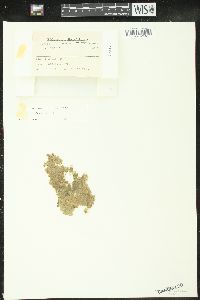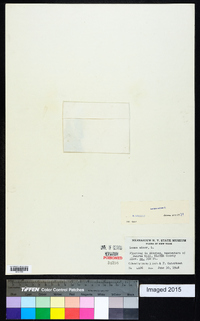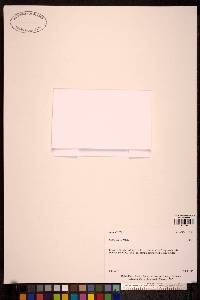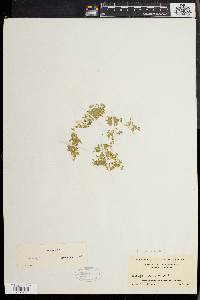
|
|
|
|
Family: Araceae
Common Duckweed, more... (es: lamita)
[Hydrophace minor (L.) Bubani, moreLemna rwandensis De Sloover, Lenticula palustris Garsault, Lenticula vulgaris L., Lenticularia monorhiza Montandon] |
Roots to 15 cm, tip mostly rounded; sheath not winged. Stipes white, small, often decaying. Fronds floating, 1 or 2--5 or more, coherent in groups, ovate, scarcely gibbous, flat, 1--8 mm, 1.3--2 times as long as wide, margins entire; veins 3(--5) (if more than 3, outer ones branching from inner ones), greatest distance between lateral veins near or proximal to middle; papillae not always distinct (one near apex usually larger); lower surface very seldom slightly reddish (much less than on upper), coloring beginning from attachment point of root, upper surface occasionally diffusely reddish; air spaces 0.3 mm or shorter; distinct turions absent. Flowers: ovaries 1-ovulate, utricular scale with narrow opening at apex. Fruits 0.8--1 mm, laterally winged toward apex. Seeds with 8--15 distinct ribs, staying within fruit wall after ripening. 2n = 40, 42 (B), 50, 63, 126. Flowering (rare) late spring--early fall. Mesotrophic to --eutrophic, quiet waters, in suboceanic, cool-temperate regions with relatively mild winters; 0--2000 m; St. Pierre and Miquelon; B.C., Ont., Que., Sask.; Ala., Ariz., Ark., Calif., Conn., Del., D.C., Fla., Idaho, Ill., Ind., Iowa, Kans., Ky., La., Maine, Md., Mass., Mich., Minn., Mo., Mont., Nebr., N.H., N.J., N.Mex., N.Y., N.C., N.Dak., Ohio, Okla., Oreg., Pa., R.I., S.Dak., Tenn., Utah, Vt., Va., Wash., W.Va., Wis.; w Eurasia; Africa; Atlantic Islands; Australia (introduced), Australia; introduced, New Zealand (introduced). Indication of this species in Newfoundland (H. J. Scoggan 1978--1979) probably refers to Lemna turionifera. A specimen in the Gray Herbarium from St. Pierre and Miquelon may represent Lemna minor or L. turionifera; its determination is questionable.
Plant: Floating aquatic forb Leaves: leaves reduced to spherical fronds,floating on water's surface, single or 2 to a few cohering in small groups, ovate, 1-8 mm long, 1.3-2 times as long as wide, flat, without a green stalk but with a very small white stipe that often decays; margins entire; nerves 3-5 (the outer ones originating from the lower part of the inner ones), the greatest distance between the laterals near or below the middle; papillae not always distinct (the one near the apex usually larger); upper surface occasionally diffusely reddish; lower surface very seldom slightly reddish (much less than the upper one); largest air spaces up to 0.3 mm wide; the sheath unwinged, the tip mostly rounded; no distinct turions present Flowers: rare, 1-ovulate, the small utricular scale with a narrow opening at the top Fruit: laterally winged. SEEDS: with 8-15 distinct ribs Misc: Mesotrophic to eutrophic, quiet waters; 2100 m (7000 ft); Jun-Aug Notes: root up to 15 cm long REFERENCES: Landolt, Elias. 1992. Lemnaceae. Ariz.-Nev. Acad. Sci. 26(1)2. Aquatic herb Flowers: occurring rarely, lacking sepals and petals, with two stamens, surrounded by a membraneous scale with a narrow opening at the tip. Fruit: bladder-like (utricle), thin-walled, 0.8 - 1 mm long, with lateral wings near tip. The seeds have eight to fifteen ribs and remain in the fruit wall after ripening. Roots: to 15 cm long with a rounded tip. Plant body: not differentiated into stem and leaves, floating or near surface, one to five or more attached, green to sometimes reddish above, rarely reddish beneath with color starting at root attachment, 1 - 8 mm, one and one-third to two times as long as wide, flattened to slightly inflated on one side to 1 mm thick, egg-shaped, with three to five veins, projections very tiny with the largest one near the tip. Air spaces inside the plant body are 0.3 mm or shorter. Similar species: Lemna aequinoctialis, Lemna perpusilla, Lemna turionifera, and Lemna minor have two to four veins and tend to be wider than 1.5 mm. Lemna aequinoctialis and L. perpusilla can be distinguished from L. minor by having roots that are usually shorter than 3 cm with a pointed tip and plant bodies that are green throughout. Lemna turionifera has distinct projections along the midvein that are all about the same size. Flowering: late July to mid September Habitat and ecology: Common in ponds or in slow-moving water of ditches, streams, and rivers. This may be the only vascular plant species present in polluted water. Occurence in the Chicago region: native Etymology: Lemna is the Greek name for a water weed. Minor means smaller. Author: The Morton Arboretum FNA 2000, Cronquist et al. 1977, Kearney and Peebles 1969 Duration: Perennial Nativity: Native Lifeform: Forb/Herb General: Perennial, free-floating aquatic herb with roots to 15 cm; fronds solitary or coherent in groups of 2-5 or more; the stipes connecting then small, white, often decaying. Leaves: Fronds (structures that look like leaves but are developmentally both stem and leaf tissue) tiny, floating, ovate, symmetrical, scarcely gibbous, 1-8 mm long, green above, rarely only slightly reddish below, with 3 veins, these difficult to see, even under magnification; air spaces present, but obscure. Flowers: Unisexual, with 1 pistillate and 2 staminate flowers borne in an enclosed membranous sheath in a marginal cleft of the frond, opening along the side or nearly closed. Fruits: Follicles about 1 mm long, not winged, or only laterally winged near apex; seeds with 8-15 distinct ribs, staying within fruit wall after ripening Ecology: Found in still to slow-moving waters, widespread below 6,500 ft (1981 m); flowers June-October. Distribution: Throughout N. Amer. except MS and MD; south to s MEX.; throughout the world on every continent. Notes: Lemna is a genus of tiny, free-floating aquatic plants, which usually form loose mats or clusters of very small (ca. 2-3 mm) -leaves- that float on the water surface, with trailing roots that are thin, transparent, and not attached to the ground. L. minor is distinguished from other Lemma spp. by having 3 veins on the leaves and roots greater than 5 cm long; distinguished from Lemna gibba by the leaves not being reddish below and the air chambers being very obscure. Identification of species within this genus is tricky and requires high magnification and technical knowledge of the group. To analyze anatomic structures (e.g., number of veins or extension of air spaces), transparent slides are necessary. Ethnobotany: Unknown Etymology: Lemna is from the Greek limnos, lake or swamp, while minor means smaller or lesser. Synonyms: Lemna cyclostasa, Linnaeus minima Editor: SBuckley 2010, FSCoburn 2015, AHazelton 2015 Thallus rotund to elliptic or obovate, (1.5-)2.5-6 mm, nearly symmetrical, commonly in groups of 2-5, very often anthocyanic beneath, dark green above, or anthocyanic on both sides, ±evidently 3-nerved, usually flat or only slightly convex on both sides, the upper surface with ±prominent papillae; spathe sac-like, open only at the top; fr not winged; seed solitary, smooth or only inconspicuously ribbed; 2n=20, 30, 40, 50. Nearly cosmop., and common throughout our range. (L. obscura, a small form; L. turionifera, overwintering by small, rootless turions at the bottom of the water) Gleason, Henry A. & Cronquist, Arthur J. 1991. Manual of vascular plants of northeastern United States and adjacent Canada. lxxv + 910 pp. ©The New York Botanical Garden. All rights reserved. Used by permission. From Flora of Indiana (1940) by Charles C. Deam Throughout the state but more general in the lake area and in the area drained by the Wabash River. …… Indiana Coefficient of Conservatism: C = 3 Wetland Indicator Status: OBL |

